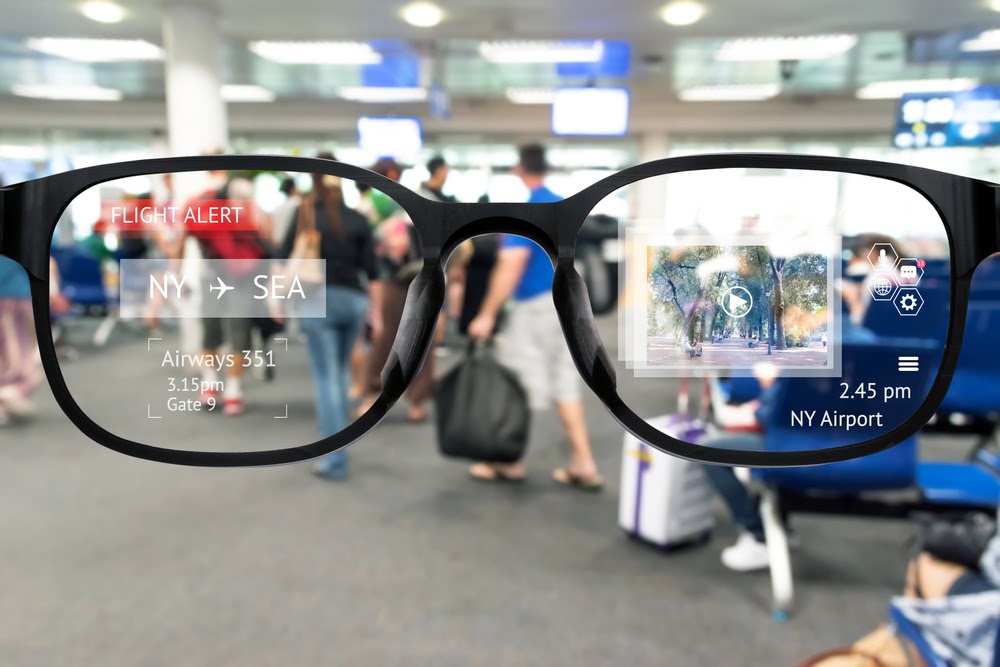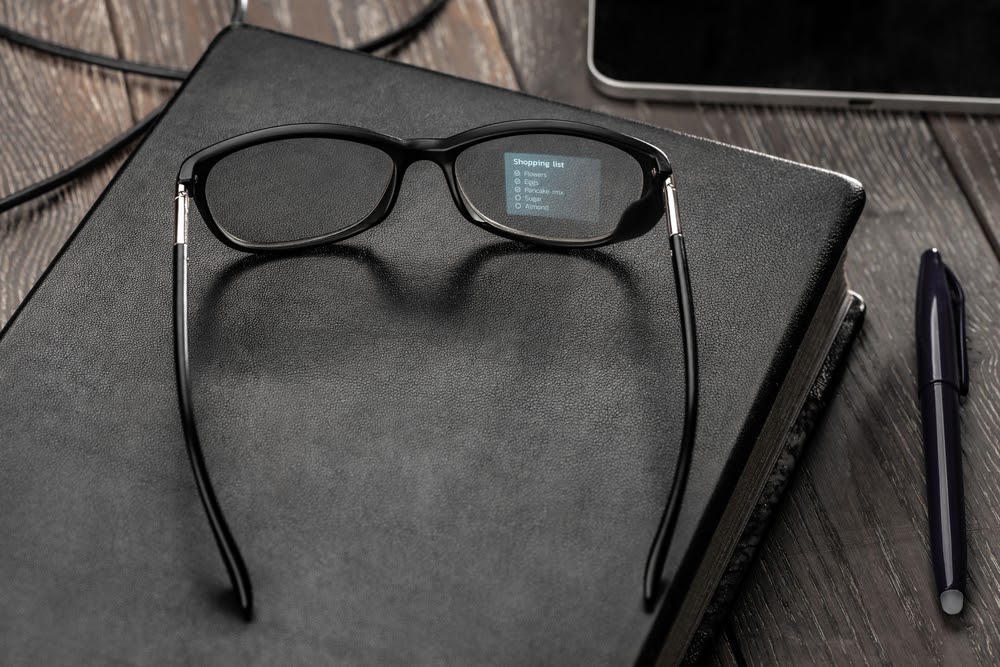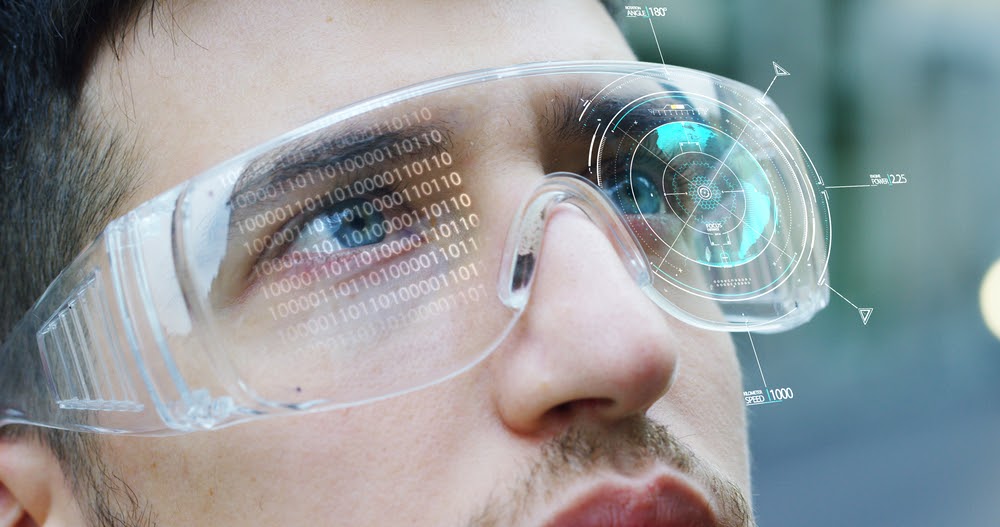Does Google Make Augmented Reality Glasses?
Most people think of Google as just a search engine, and it’s not hard to see why. Its search engine is undoubtedly its most popular and successful product. In fact, Google handles more than 90% of searches performed around the world. However, the search engine is just one of many products created by Google.
Google offers a wide range of services, including advertising platforms, publishing tools, maps, analytics, market research, email, and messaging apps. The company also creates products, including laptops, tablets, and smartphones. But does Google make augmented reality glasses? Here’s everything you need to know:
What Are Augmented Reality Glasses?
The term “augmented reality glasses” refers to eyewear supported by augmented reality technology. The functionality of augmented reality glasses can vary from model-to-model. But in general, this technology allows the wearer to superimpose elements from the digital world such as images or audio onto their real world environment. These digital elements are projected onto the lenses of the glasses so they are easily visible to the wearer.
For example, a pair of augmented reality glasses may help you figure out where to go by projecting turn-by-turn directions onto your lenses. Digital elements such as arrows and street signs may appear on your lenses to guide you to your final destination.
Even though the information is projected onto the lenses, it is only visible to the wearer. This means no one will know what you are looking at when wearing a pair of augmented reality glasses.

A Brief History of Google Glass
Google Glass is a brand of smart glasses, or augmented reality glasses, produced by Google. Even though Google Glass was initially released less than a decade ago, the brand has a long and complicated history.
Pre-Launch Promotion
In 2012, Google released a short video called “Project Glass: One Day,” which showed how the Google Glass could enhance a normal day in the life of a consumer in New York City. The video shows how the wearer is able to use his glasses to check the weather, look at his calendar, listen to music, and perform other tasks.
Later that year, Google revealed the first prototype of the smart glasses at the Google I/O event. Sergey Brin, Google’s co-founder, got on stage and interrupted Vic Gundotra, Google’s senior vice president, in order to treat the audience to a live demo of the glasses.
Google also partnered with Diane Von Furstenberg, a fashion designer, to generate more buzz around the upcoming release of the Google Glass. The company released video footage filmed with the Glass prototype that took viewers behind the scenes of a Diane Von Furstenberg fashion show.
These are just several examples of the publicity stunts that were planned in an effort to get consumers excited about the launch of the Google Glass.
The Launch of Google Glass
In 2013, Google released its first pair of smart glasses, the Google Glass. The glasses looked like standard glasses, however the lenses were replaced with an augmented reality heads-up display.
Google invited consumers to use a branded hashtag on Twitter to enter for a chance to purchase a pair of the first edition smart glasses. The company ended up choosing 8,000 Twitter users. All of the users who were chosen had to pay $1,500 to acquire a pair of the glasses. The users who were willing to pay this price could acquire the glasses before they were available to the public in May 2014.
Google Glass Backlash
Some consumers loved the Google Glass when it was released, but the glasses received a great deal of backlash from the general public. Because the Google Glass was designed with a head-mounted video camera, many people worried that Google Glass wearers would be able to film them without their consent.
These privacy concerns continued to grow as more people began wearing the Google Glass in public places. Eventually, some restaurants, bars, and other businesses began to ban their customers from wearing the smart glasses. The public even coined the term “glasshole” to describe consumers who wore the smart glasses in a way that was deemed socially unacceptable.
Furthermore, prominent tech reporters complained that the Google Glass performed poorly and had a terrible battery life.
In 2015, Google announced that they would no longer sell Google Glass as a result of the backlash, performance issues, and privacy concerns.
The Redesign of Google Glass
Shortly after announcing the end of Google Glass, Google revealed that it was in the process of redesigning its smart glasses. Tony Fadell, a former Apple executive, was responsible for overseeing the redesign. In an interview, he revealed that his team would not release the redesigned Google Glass until they felt the product was absolutely perfect.

The Google Glass Enterprise Edition
The Google Glass Enterprise Edition, which was the second edition of the product, was announced in 2017. Unlike the first edition, the Google Glass Enterprise Edition would not be available to consumers. Instead, the product was only sold to businesses such as Boeing, DHL, and GE.
The Google Glass Enterprise Edition was primarily used by factory workers. For example, workers on the assembly line could use the glasses to quickly access instructions or other information without stepping away from their work. This way, they could find the information they needed to perform their job duties without stepping off the assembly line or asking someone for help.
The Google Glass Enterprise Edition featured a number of upgrades, including a longer battery life, faster processor, and a light that turned on whenever the video camera was recording.
Overall, this product was considered a success among its limited customer base.
The Google Glass Enterprise Edition 2
In 2019, Google announced the Google Glass Enterprise Edition 2. Just like the first edition, the Google Glass Enterprise Edition 2 was designed for and sold solely to businesses. It featured minor design upgrades in addition to a better camera and faster processor.
According to Google, these smart glasses have helped businesses reduce production times, improve quality, and lower operating costs.
Can Consumers Expect Google Augmented Reality Glasses in the Future?
Even though the latest editions of the Google Glass have been successful with businesses, Google has not announced plans to make them available to consumers. However, some industry insiders believe that Google is already in the process of developing a new pair of augmented reality glasses for consumers.
Google recently announced that they are actively looking to hire someone to create an augmented reality operating system for an unspecified augmented reality device. This indicates that the company is planning on building a new augmented reality device from the ground up, which has led many people to conclude that this device will be sold to consumers.
Furthermore, Google recently acquired North, a Canadian smart glasses manufacturer. North has already successfully launched a pair of augmented reality glasses, the North Focals. The company also planned on releasing Focals 2.0, but these plans were halted after the acquisition.
Neither Google nor North has revealed what the companies will be working on together. This has led many industry insiders to predict that Google is secretly working on a new and improved pair of augmented reality glasses for consumers. But even if these predictions come true, there’s no telling when the augmented reality glasses will be available.

What About Facebook’s Virtual Reality and Augmented Reality Glasses?
Google isn’t the only player in the mixed reality wearables market. Many other companies, including Facebook, have invested heavily in developing virtual reality and augmented reality wearables for consumers.
After acquiring Oculus, Facebook successfully launched a line of virtual reality headsets for consumers. The Oculus Rift, Oculus Go, and Oculus Quest were met with mixed reviews from consumers and tech reporters. Facebook has never released sales numbers for the Oculus product line, but has said that all Oculus products have been successful.
For years, it has also been rumored that Facebook is secretly working on a pair of augmented reality glasses.
Facebook is also in the middle of developing a high-end virtual reality and augmented reality headset for consumers. Few details have been released to the public about this headset, which the company has nicknamed “Project Cambria.”
However, Facebook CEO Mark Zuckerberg did reveal that the product will be completely new and will feature face and eye tracking. The headset will also be designed with cameras that can capture and send high-resolution videos to the lenses. Many industry insiders believe that the headset will look and perform similar to the mixed reality headset that Apple is currently developing.
Even though Facebook has confirmed that this headset is in development, the company has not announced when it will be available for sale or how much it will cost. But Zuckerberg did state that he expects the product to be priced at the “high end of the price spectrum.”
One thing is certain: the competition in the augmented reality wearables market is heating up. Now that Facebook, Google, and Apple are all developing augmented reality devices, there’s no question that consumers will have the option of purchasing one of these innovative wearables in the near future.
Recent Posts
Categories
Luxury Cars
Trucks
Sedans
